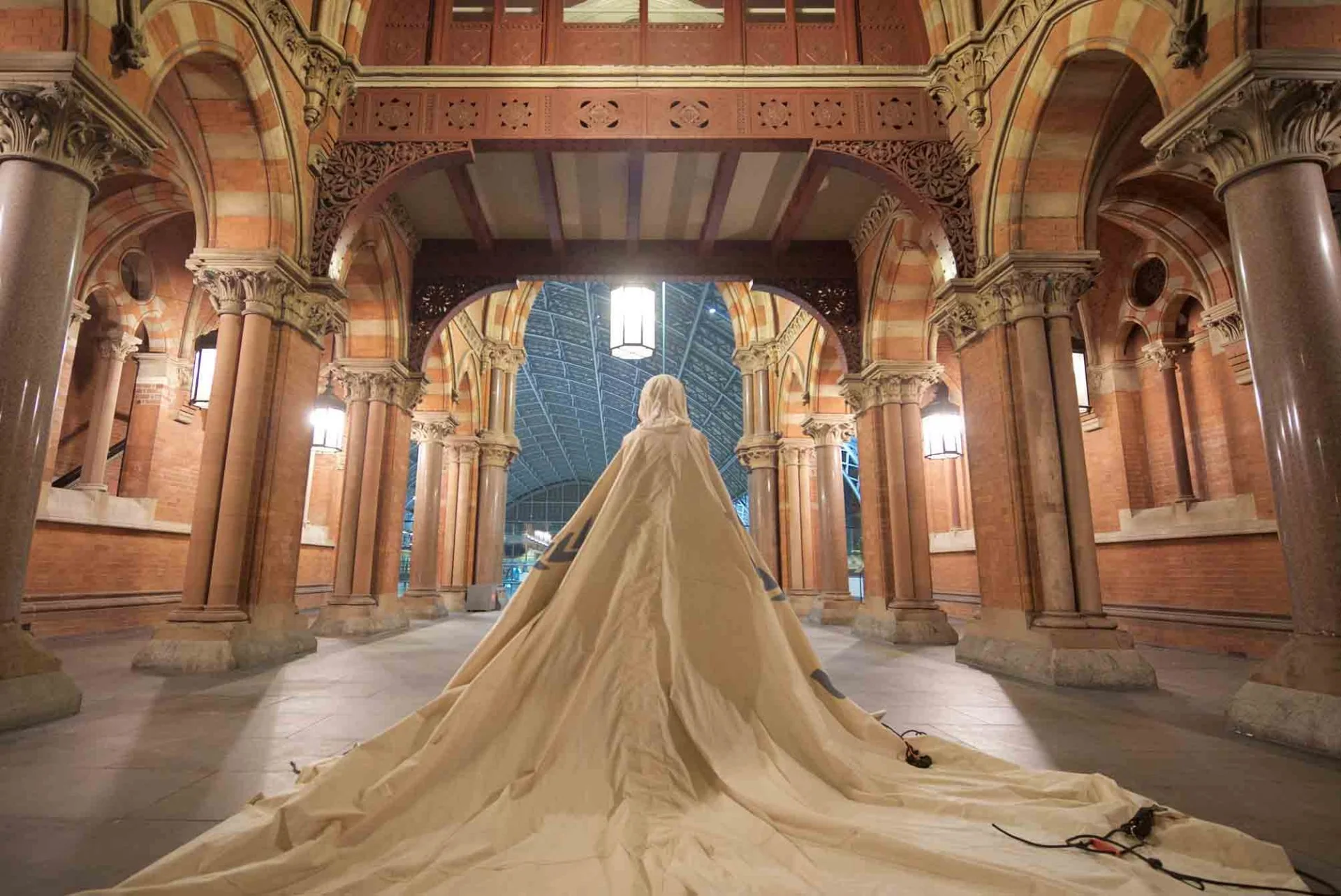Dress for Our Time
Earlier this year, I interviewed Professor Helen Storey MBE RDI about her plans for a new project that would combine disciplines to explore concerns about climate change (read the interview here). Now, Dress For Our Time, the piece of digital couture that is the result of these plans, has been unveiled - and it’s every bit as moving as Professor Storey described it. Developed with interactive creative agency Holition, the Dress is made from a tent gifted to the project by the United Nations High Commissioner for Refugees (UNHCR). A digital display projected across its train maps the effects of climate change on the world.
DRESS-FOR-OUR-TIME-taken-by-Helen-Storey-
It stands, until Sunday, in St Pancras International: the UK’s gateway to Europe and the setting off point for many to one of the most important climate change summits in history, COP21, this December. Delegates from over 190 nations will gather in Paris to discuss a new agreement on climate change, with the aim of keeping global warming below 2°C. More than that will cause catastrophic changes to many parts of the world.
‘One of the most powerful things about dropping a work like this into public places is that people don’t expect to see it,’ muses Professor Storey. ‘And when you don’t expect to see something, there’s a different level of openness and curiosity. Putting fashion, science, technology into a place where 94,000 people pass through every day is quite an experiment in itself.’
The cloth itself is a powerful medium, gifted to the project by the UNHCR: the roof of a disused tent that housed a six member Syrian family who had walked from Syria to Jordan. ‘It’s unprecedented because tents never come back. They’re never not needed,’ says Storey. ‘The relationship with UNHCR has been very moving. What they’re interested in is the power of fashion and the unexpected to help their cause. For me, it’s a piece with three elements: nature, technology, and the human story. Bringing those elements together helps people connect to the dress in multiple ways.’
Storey was inspired by news stories about refugees. ‘Discovering the tent was a key moment. I realised I needed was a cloth that already had humanity in it, a cloth that - in its very fabric - is affected by human endurance and the resilience it takes to flee.’
IMG_8947
The projections are informed by climate change research; areas unaffected by climate change are shown in red, those affected in black. ‘The first phase is our planet now as we know it,’ says Storey. ‘That stays present for 10 seconds. Then it slowly fades out until there’s nothing on the dress, the moment of "what if we don’t do enough?"'
‘The third segment is what the world would look like if we don’t do anything. The study was referred to us by the MET Office. We wanted to look at the most dramatic way of showing what ecosystem shift would look like - in a snapshot. Part of the challenge of being in St Pancras, which is such a transitory space, is getting a succinct message across without losing the integrity of science - yet without making something so complicated no one knows what they’re looking at.’
Dress for Our Time stands at the back of St Pancras hotel, overlooking the shopping thoroughfare that runs through the station and facing, in an odd irony, a Christmas tree sponsored by Disney. Disney's tree is comprised of soft toys and at least 10 times the size of Storey's dress. It is a metaphor, if you like, of the forces in competition here - and yet, in the case, if the underdog doesn't win out, the implications are serious for us all. This is the Dress's first chapter. As it goes on its urgent, evocative journey, let's hope we will never need to find out what happens if we do not do enough.


